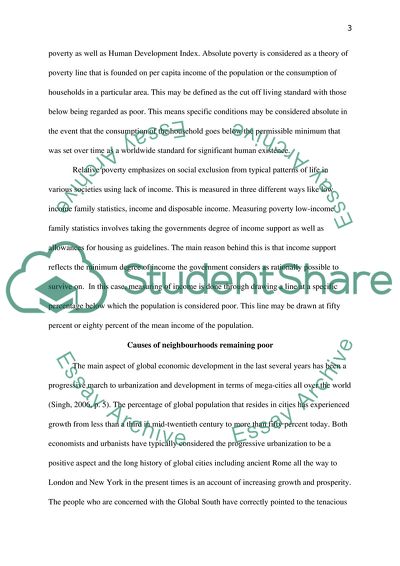Cite this document
(“Neighbourhoods Remaining Poor Essay Example | Topics and Well Written Essays - 2500 words”, n.d.)
Neighbourhoods Remaining Poor Essay Example | Topics and Well Written Essays - 2500 words. Retrieved from https://studentshare.org/social-science/1856066-many-poor-neighbourhoods-in-more-developed-countries-remain-poor-for-decades-what-are-the-causes-of-this-your-answer-should-consider-the-roles-of-the-economy-the-social-residential-sphere-and-their-interaction
Neighbourhoods Remaining Poor Essay Example | Topics and Well Written Essays - 2500 words. Retrieved from https://studentshare.org/social-science/1856066-many-poor-neighbourhoods-in-more-developed-countries-remain-poor-for-decades-what-are-the-causes-of-this-your-answer-should-consider-the-roles-of-the-economy-the-social-residential-sphere-and-their-interaction
(Neighbourhoods Remaining Poor Essay Example | Topics and Well Written Essays - 2500 Words)
Neighbourhoods Remaining Poor Essay Example | Topics and Well Written Essays - 2500 Words. https://studentshare.org/social-science/1856066-many-poor-neighbourhoods-in-more-developed-countries-remain-poor-for-decades-what-are-the-causes-of-this-your-answer-should-consider-the-roles-of-the-economy-the-social-residential-sphere-and-their-interaction.
Neighbourhoods Remaining Poor Essay Example | Topics and Well Written Essays - 2500 Words. https://studentshare.org/social-science/1856066-many-poor-neighbourhoods-in-more-developed-countries-remain-poor-for-decades-what-are-the-causes-of-this-your-answer-should-consider-the-roles-of-the-economy-the-social-residential-sphere-and-their-interaction.
“Neighbourhoods Remaining Poor Essay Example | Topics and Well Written Essays - 2500 Words”, n.d. https://studentshare.org/social-science/1856066-many-poor-neighbourhoods-in-more-developed-countries-remain-poor-for-decades-what-are-the-causes-of-this-your-answer-should-consider-the-roles-of-the-economy-the-social-residential-sphere-and-their-interaction.


